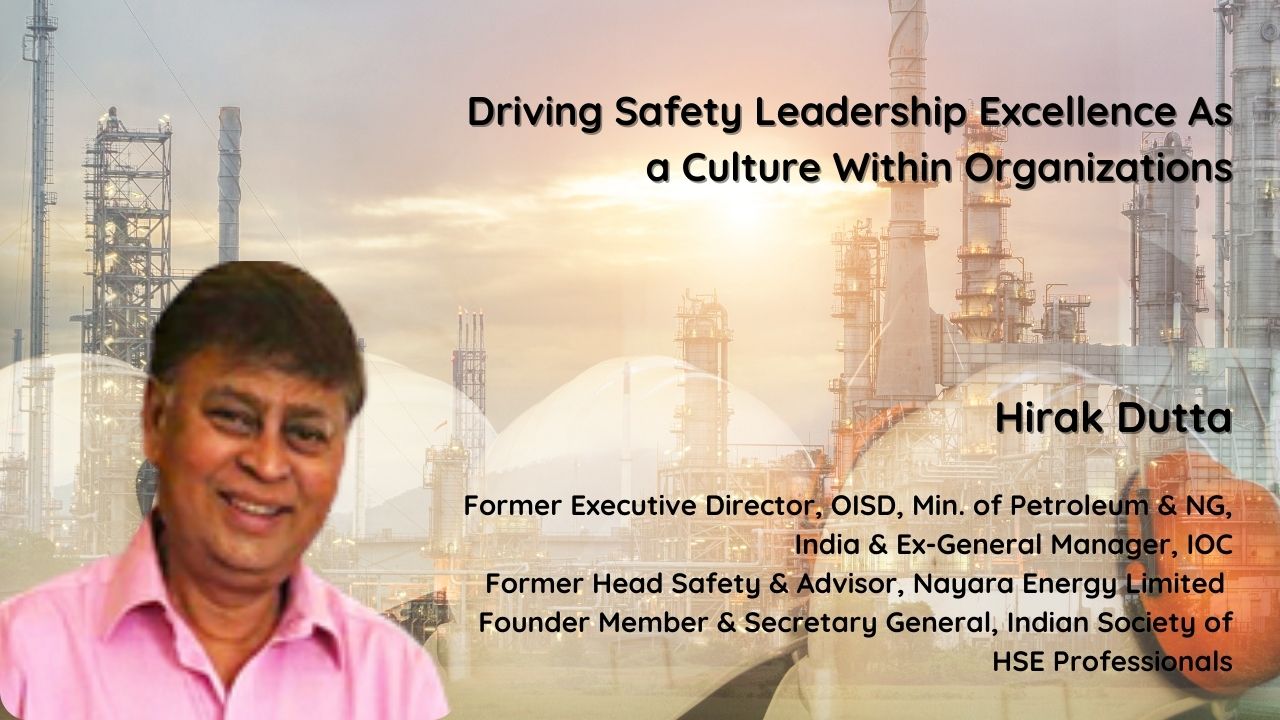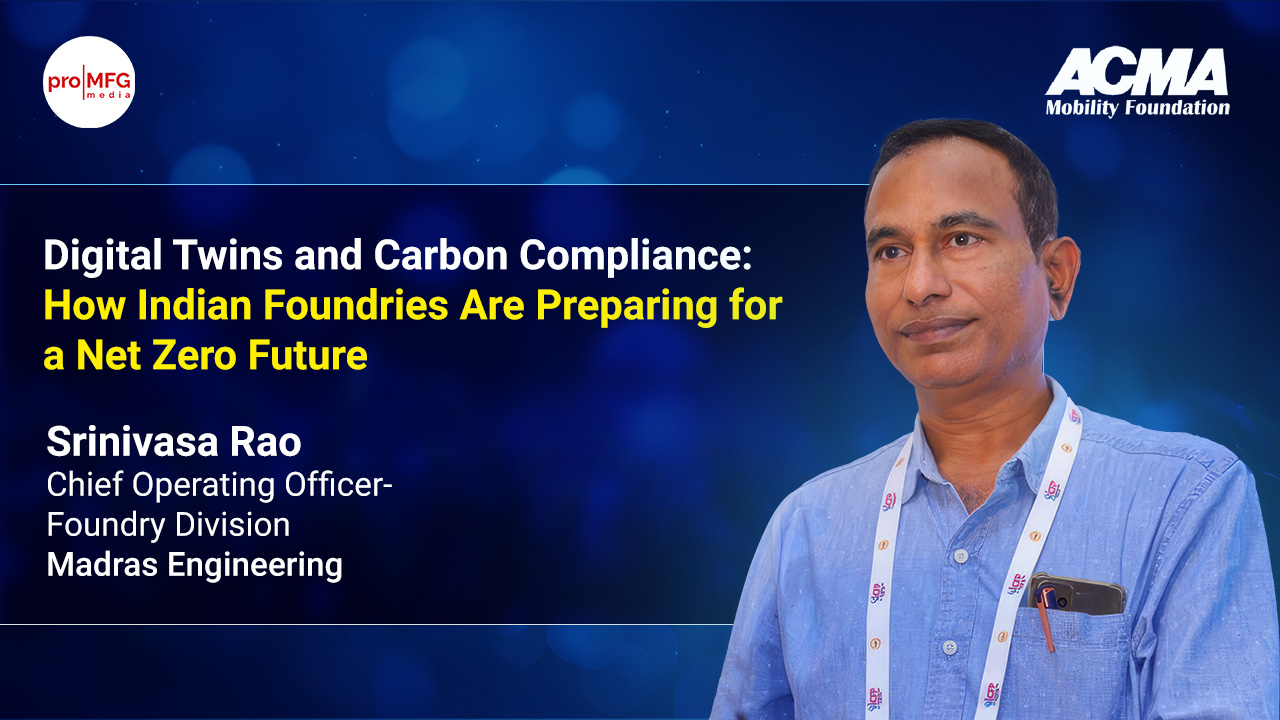
Safety is the most important aspect for every organisation, especially those in the hazardous manufacturing sector. In most of the manufacturing organizations, fatality, LTI (Lost Time Injury), TRIR (Total Recordable Incident Rate) and Safety Walks are discussed prior to financial and operational performance.
Safety is a way of life and is not just limited to the manufacturing area but includes behaviour in the office area too. Therefore, it is everyone's responsibility within the organisation to not only keep oneself safe but also report incidents of unsafe behaviour. As they say, prevention is better than cure, safety needs to be practiced first and foremost before, during and after every activity throughout the day.
Sharing his decades of expertise in the domain, Mr. Hirak Dutta, spoke with Pro MFG Media in an exclusive interview.
Speaking about his views on shop floor level safety culture and leadership attributes to drive the same within an organization, he said that the most prominent reason of workplace accidents is once complacency or violation of the Standard Operating Procedures (SOPs). This is especially true for any high hazard industry, like nuclear power, refineries, petrochemicals and so on. He goes on to say that people these days have turned SOPs into ‘standard optional procedures’, which is why so many accidents take place. Another important factor that contributes to poor safety conditions is the violation of the work permit system.
Moving on, he rightly pointed out the very need of ample plant visits that seems to be lacking these days, with most of the managers having a lackadaisical attitude towards routine plant visits and choosing to follow through the Real Time Data Management System (RDMS) alone sometimes. In addition to this, poor supervision of contractual labors is also a common cause of accidents within plant sites. While contractors are inevitable in the manufacturing industries, it is equally essential to keep a close watch on their performance in order to avoid untoward incidents within the sites and beyond. And this responsibility to ensure the right safety culture is followed within the organization with the manager.
He further goes on to emphasize on the importance of being in constant touch with the people at the shop floor level, meeting them in person often to keep a track of their grievances at the worksite. Instead, most of the managers are prone to merely passing on instructions from time to time, leaving enough space for uncertainty. He adds that “Learning is a two-way process. If we don’t communicate with the people behind the machines and at the shop floor level, we are missing an opportunity to learn. This, in turn, creates a communication barrier and hinders a good safety culture from being developed.” Furthermore, one must ensure a good employee engagement practice, wherein problems can be solved jointly within the organization. The best way to achieve excellence in driving the safety culture lies in two things- “Listening to the people and listening to the machines.” In fact, no machine ever breaks down without giving signals. The problem here is that one either ignores it or lacks the expertise to identify the problem.
In addition to an efficient safety leadership, Mr Dutta also touched upon the parameters to keep up a good safety culture within the organization. He underlined the fact that even an entire year of accident-free operations in an organization, doesn’t guarantee safety in the days to come. Therefore, one must keep a close watch on the leading indicators. One of the most important leading indicators is the near-miss incidents, which often go unrecorded and subsequently, unaddressed. To report the near-miss incidents and thereby learn to segregate them into high and low intensity near-miss incidents, is something that contributes largely to the safety culture. This helps avert future mishaps and potential threat to life and loss of manhours. A great way to ensure this is to put this as a KPI for the managers, by the leadership itself.
Leadership and Trust must work hand-in-hand
Highlighting the need for good leadership skills at the plant level, Hirak emphasized that the leaders must have a “want to do” attitude, without which it is extremely challenging to develop the necessary confidence in the employees. A good leader must be able to uphold the morale of the employees at all times and must also be able to support and upskill employees at different performance levels - high performers, average performers and low performers.
He further pointed out that organizations should avoid a culture of rewarding ‘yes-men’. They should develop strong performance metrics for rewarding only the high-performers. With this policy in place, the average performers, who have the potential, would move towards high performance. It also develops a sense of contribution among employees.
On a concluding note, Mr. Hirak Dutta underlines the fact that safety should be in the DNA of every organization. A great safety leadership culture can only be inculcated when the leaders ‘Walk the talk’ and develop strong confidence and trust among the leadership and the employees at all levels and the onus to be able to achieve that lies with the leaders.
About Hirak Dutta:
Hirak Dutta was accorded with the Lifetime Achievement Excellence award for his contribution in the field of Process Safety Management in Indian Oil & Gas sector by the former Chief Justice of India, Shri Dipak Mishra, in 2019.
He is the Founding member and Secretary General of the Indian Society of HSE Professionals, Hirak Dutta has about four decades of experience in process design and engineering, operations, troubleshooting, safety and project management, and human resource management at various refineries for the Indian Oil Corporation Ltd. (IOCL). During the earlier days of his career, he commissioned the Mathura refinery, and was technical head of IOCL’s Haldia refinery. After his three decades old stint with IOCL, Mr. Dutta went on to serve as the Executive Director of the Oil Industry Safety Directorate (OISD) under India’s Ministry of Petroleum and Natural Gas from the year 2011-2015. Till March 2020, Hirak was associated with Nayara Energy Limited (Essar Oil Limited) as Head Safety & Adviser.
Among various sessions at premiere institutions like the Indian Institute of Technology (IIT), AIChE, CCPS, PNGRB, IOCL, BPCL, GAIL etc.,Hirak also teaches at IIM-Ahmedabad in its Management Development Program on ”Safety in Project Management”.
A chemical engineer by profession, Mr. Hirak Dutta has a condensed MBA (MEP) degree from IIM-Ahmedabad. He has authored multiple papers in the area of technical and safety management and is a regular participant at technical, process safety and behavioral events. He has presented papers at several prestigious national and international conferences.
NEWSLETTER
TRENDING ON PRO MFG
MORE FROM THE SECTION









